I have a love-hate relationship with Pollan. He writes well, but for popular 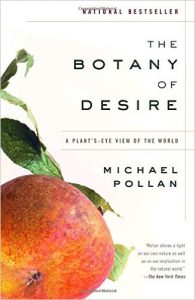 science I often find it a bit lighter on science than I’d like. As with many writers who fall somewhere between journalism and pop science, you often get a long story about visiting a person and place instead of a detailed description of the science at hand.
science I often find it a bit lighter on science than I’d like. As with many writers who fall somewhere between journalism and pop science, you often get a long story about visiting a person and place instead of a detailed description of the science at hand.
Then again, I have never failed to enjoy one of his books. This one is about plants that have so deeply satisfied human desires (marijuana, apples, potatoes, and tulips) that humans have cultivated them extensively. The conceit here is that the plants have tapped our desire as a means of reproduction. This isn’t a new idea, and I suspect it wasn’t new in 2001, but it is very well explored. And, like all Pollan’s books, it has an engaging structure as it moves from topic to topic – tulips are beauty, apples are sweetness, potatoes are control, and marijuana is intoxication.
In short, I enjoyed it, and to the extent I have criticisms, they are basically unfair. I would prefer more depth in a book that is supposed to read more like an adventure travelogue of food. If that sounds like something you’d like, I recommend it.

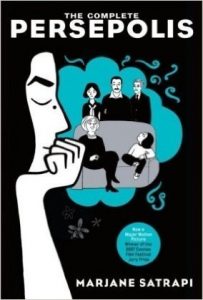 Revolution as the daughter of secular leftist parents. It’s not the most beautiful of graphic novels, but the art hits the right tone. Although I enjoyed it, and recommend it if you’re interested in the history, I have trouble putting it on the same pedestal as books like Fun House by Bechdel. Bechdel’s book both recounts stories from her life and weaves them into a sort of visual poem. Satrapi’s stories are fascinating (viscerally, they are more interesting than Bechdel’s), but they don’t really come together as something.
Revolution as the daughter of secular leftist parents. It’s not the most beautiful of graphic novels, but the art hits the right tone. Although I enjoyed it, and recommend it if you’re interested in the history, I have trouble putting it on the same pedestal as books like Fun House by Bechdel. Bechdel’s book both recounts stories from her life and weaves them into a sort of visual poem. Satrapi’s stories are fascinating (viscerally, they are more interesting than Bechdel’s), but they don’t really come together as something.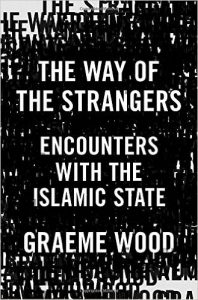 interesting of all, Wood argues that the West has often misunderstood Islamic State members, by either claiming that they’re purely the product of our own influence, or that they are not truly a religion, or that the people in charge are mere power seekers. To oversimplify a bit, Wood’s big point is that these people are best understood as religious people with a great deal of conviction, who believe in a fundamentalist interpretation of the Qu’ran, that leads to their awful behavior. Particularly memorable for me was a part where he mentions a conservative American scholar who believes we fail to understand ISIS because most of us in the secular West no longer understand the basic ideological framework that would lead someone to endure war and privation for religious beliefs.
interesting of all, Wood argues that the West has often misunderstood Islamic State members, by either claiming that they’re purely the product of our own influence, or that they are not truly a religion, or that the people in charge are mere power seekers. To oversimplify a bit, Wood’s big point is that these people are best understood as religious people with a great deal of conviction, who believe in a fundamentalist interpretation of the Qu’ran, that leads to their awful behavior. Particularly memorable for me was a part where he mentions a conservative American scholar who believes we fail to understand ISIS because most of us in the secular West no longer understand the basic ideological framework that would lead someone to endure war and privation for religious beliefs. fascinating biology along with a lot of the weird anecdotes you might imagine a biologist who studies venom might have.
fascinating biology along with a lot of the weird anecdotes you might imagine a biologist who studies venom might have. bit more technical, but this book really is concise and focused mostly on basic historical facts. If you don’t know anything about the history of computing, this is a great place to start. If you already know the basic deal, I’d skip it.
bit more technical, but this book really is concise and focused mostly on basic historical facts. If you don’t know anything about the history of computing, this is a great place to start. If you already know the basic deal, I’d skip it. to call a flaw because the author is quite aware of it) is that in the book’s exuberance for the specialness of English, it can get quite a bit too teleological. Just about any claim in English’s favor could be easily explained as survivor bias.
to call a flaw because the author is quite aware of it) is that in the book’s exuberance for the specialness of English, it can get quite a bit too teleological. Just about any claim in English’s favor could be easily explained as survivor bias. meandering and strange, and yet very beautiful. Like all good Dick novels, I can’t really explain it by trying to describe it. It’s a post-apocalypse book, but it’s really not like any other such book. It’s more of a poem in a certain sense. Anyway, go read it.
meandering and strange, and yet very beautiful. Like all good Dick novels, I can’t really explain it by trying to describe it. It’s a post-apocalypse book, but it’s really not like any other such book. It’s more of a poem in a certain sense. Anyway, go read it.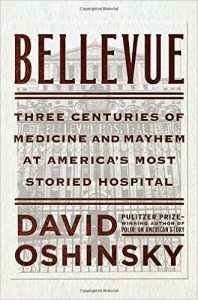 cleverly uses what is ostensibly a sort of biography of Bellevue to explore the history of medicine since the 18th century, and to explore the relation between hospitals, the government, and the public in the United States. It’s fascinating stuff.
cleverly uses what is ostensibly a sort of biography of Bellevue to explore the history of medicine since the 18th century, and to explore the relation between hospitals, the government, and the public in the United States. It’s fascinating stuff.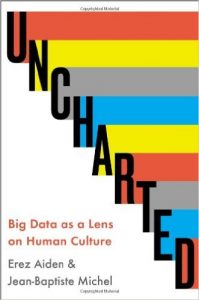 victimized by the authors’ success. This book is basically a description of how the authors (and others) created google ngrams. It’s not just technical stuff either – it’s a lot of their philosophy of what they find interesting.
victimized by the authors’ success. This book is basically a description of how the authors (and others) created google ngrams. It’s not just technical stuff either – it’s a lot of their philosophy of what they find interesting.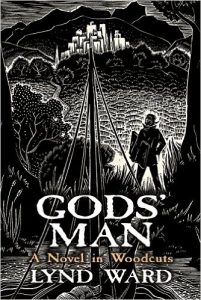 of what would later become the Graphic Novel. It’s a beautiful, if simple, story told in a series of gorgeous woodcuts with an incredible 1920s art deco feel to them. I went through it somewhat quickly, but I find the images stay with me. Definitely worth a look.
of what would later become the Graphic Novel. It’s a beautiful, if simple, story told in a series of gorgeous woodcuts with an incredible 1920s art deco feel to them. I went through it somewhat quickly, but I find the images stay with me. Definitely worth a look.